There are a few timepieces that are inexorably linked to a brand by history and help to foment a brand’s identity among enthusiasts and non-enthusiasts alike. The Submariner and Rolex, the Sub series and Doxa, the Navitimer and Breitling, to name a few of the obvious examples. Then there’s the Speedmaster, a staple of the Omega line-up due to its work as a steady and reliable tool in US space flight.
Brief History of The Speedmaster and NASA
In 1962, NASA began purchasing and evaluating Omega Speedmaster watches for space flight missions [1]. In October of 1962, Walter Schirra, one of the original seven NASA astronauts, and the only astronaut to participate in Mercury, Gemini, and Apollo missions, wore his personal Omega Speedmaster CK2998 during the Mercury Sigma 7 mission, circling the earth six times, marking the first time an Omega had been used on a NASA mission, and helping to set the course for the Omega Speedmaster in future space flight missions [2,3]. In 1965, the first Omega Speedmaster was certified by NASA for manned space missions, and issued to astronauts thereafter, later to be named the Omega Speedmaster Professional around 1966 [1].
Design Differences Between FOIS and CK2998
The First Omega in Space (FOIS) is a numbered homage to the CK2998 worn by Schirra in 1962, rather than a reissue of the CK2998 for several reasons. Omega has confused the landscape by creating a CK2998 limited edition reissue of 2998 pieces, reference 311.32.40.30.02.001. It has some profound differences from the CK2998 worn by Schirra in 1962.
Principally, instead of the calibre 321, a column wheel chronograph movement that powered the CK2998 and every Speedmaster that was used on lunar missions, the FOIS houses the calibre 1861, as does the Speedmaster CK2998 Pulsemeter reissue, and the Speedmaster Professional Moonwatch. The Omega calibre 1861 is considered an evolutionary upgrade to the calibre 321, but instead of a column wheel chronometer movement, the calibre 1861 is a Lemania 1873 based cam actuated manual wind chronograph movement with 40 hour power reserve, which is less collectable, and far less expensive to produce than the calibre 321.
The First Omega in Space also replaces the original plexi crystal with a box sapphire crystal, substituting period correctness with a pleasingly high degree of durability and long lasting visibility, which makes for a more wearable piece.
The design of the FOIS is a departure from the Speedmaster Professional Moonwatch and other current Speedmasters, and nearly every design element contributes to a more vintage look and feel, which is one of the principle charms of this timepiece.
The 39mm Case
The FOIS case size of 39.7mm splits the difference between the Speedmaster Professional (and Racing) which is 42mm, and the Speedmaster Reduced which is 39mm. While the Speedmaster Professional has the much loved twisted lug design, the First Omega in Space presents a more straight lug design, similar to the CK2998 and other vintage Speedmasters.
The FOIS lacks the asymmetrical case design of the Speedmaster Professional which has crown guards integrated into the case design. The lack of crown guards may be a less rugged and functional design compared to the Speedmaster Professional, but for us “desktronauts”, this again suggests a vintage aesthetic that is both appealing and distinct from the Moonwatch relative.
The finishing on the case and bezel is of the highest quality, with a brushed or blasted finish on the sides of the case and lugs, and high polish on the top surfaces and bezel edge. The signed crown is not deep, but large in diameter with course ridges. This provides a nice mechanical advantage when winding the watch, although I find I only can get traction on the bottom of the crown to wind the movement.
The chronograph pushers are narrow compared to the pushers on the Speedmaster Professional and activate with a firm report when pressed.
The Dial and Hands
The dial of the FOIS is the centerpiece of the model. The dial has a glossier finish than the Speedmaster Professional. The dial of the First Omega in Space does not have an enameled appearance, but a slight gloss that nicely reflects light off of the beveled surfaces surrounding the subdials. The dial also has a pie plate contour and recessed subdials providing a nice three-dimensional look.
The lumed five minute indices are slightly wider and longer than the minute/second track markers, and the subsecond markers. This creates a functional contrast between each marking track. Lume on the indices and hands is not generously applied due to the available real estate, but it’s bright and adequate for an hour or so of use in the dark.
The hands and subdials are almost certainly the most controversial and polarizing design element of the FOIS. Omega chose to match the timekeeping hands, the hour, minute, and second subdial hand with silver alpha hands. While the hands associated with chronograph function have the familiar matte white painted stick hands in common with Speedmaster Professional.
While some are put off by the lack of symmetry this creates in the FOIS, I find the design choice sensible, functional, and very attractive. The silver alpha hands create a more delicate and formal dress look, distinguishing the First Omega in Space further from the Speedmaster Professional and contributing to the vintage vibe.
There have been complaints in various circles that the hands (being both high polish silver and quite thin in profile) may disappear in some low lighting conditions. While I do notice that the second hand loses contrast, I do not find that the hands become impossible to see at a glance of the watch. I would not trade the beauty of the package for the utility of the matte white hands.
19mm Stock Leather Strap
For my taste, the supplied leather strap is one of the few disappointments of the watch. The strap is a ho-hum medium brown leather affair, with white stitching, and a high polish signed buckle in 19mm to further frustrate the issue. It looks and feels like a $30 strap with a $300 price tag, because it is.
Fortunately, 20mm NATO straps fit brilliantly between the FOIS lugs. I suppose the strap may be period accurate, but it is not particularly long for average to large wrists and does not provide particular texture or character.
Closing Thoughts:
To put a final point on the design discussion and review, the First Omega in Space provides the opportunity to own and wear a close representation of a vintage Omega Speedmaster with space flight history, with none of the risk and hassle of acquiring and owning a vintage Swiss mechanical chronograph. This is a double victory for Omega in my opinion. I find great pleasure in wearing and looking down at this Speedmaster.
The packaging that comes with the FOIS is classic Omega: dramatic and overbuilt. The watch comes in a signed black wooden box with proper high-polished hinges, locking hardware, and a grey suede lining that would be just as appropriate as the interior of a private jet. Omega insists you know that you purchased a special timepiece. Also packed with the watch are sleeved Omega global warranty cards and the operating manual.
The FOIS is a great choice for collectors that wish to own a small part of the Omega space flight history in a package that differs in form and function from the classic Moonwatch and its many limited edition variants. The vintage size and appearance may be the most appealing part of this timepiece. The FOIS is attainable, wearable, and relatively affordable when compared to the limited editions of the Speedmaster Professional and other Swiss mechanical chronographs like the Rolex Daytona, Zenith El Primero, and Breitling Navitimer.
References
- Bailham, Lee & Jones, Eric M. (2004). Omega Speedmaster Professional Chronographs. Retrieved from: https://history.nasa.gov/alsj/omega.html
- Omega. (2020). Space watch: the first OMEGA Speedmaster in space (1962). Retrieved from: https://www.omegawatches.com/chronicle/1962-the-first-speedmaster-in-space.
- Pearlman, Robert Z. (2007). Original Astronaut Wally Schirra Dies at 84. Retrieved from: https://www.space.com/3763-original-astronaut-wally-schirra-dies-84.html
- Watchbase. Omega calibre 1861. Retrieved from: https://watchbase.com/omega/caliber/1861

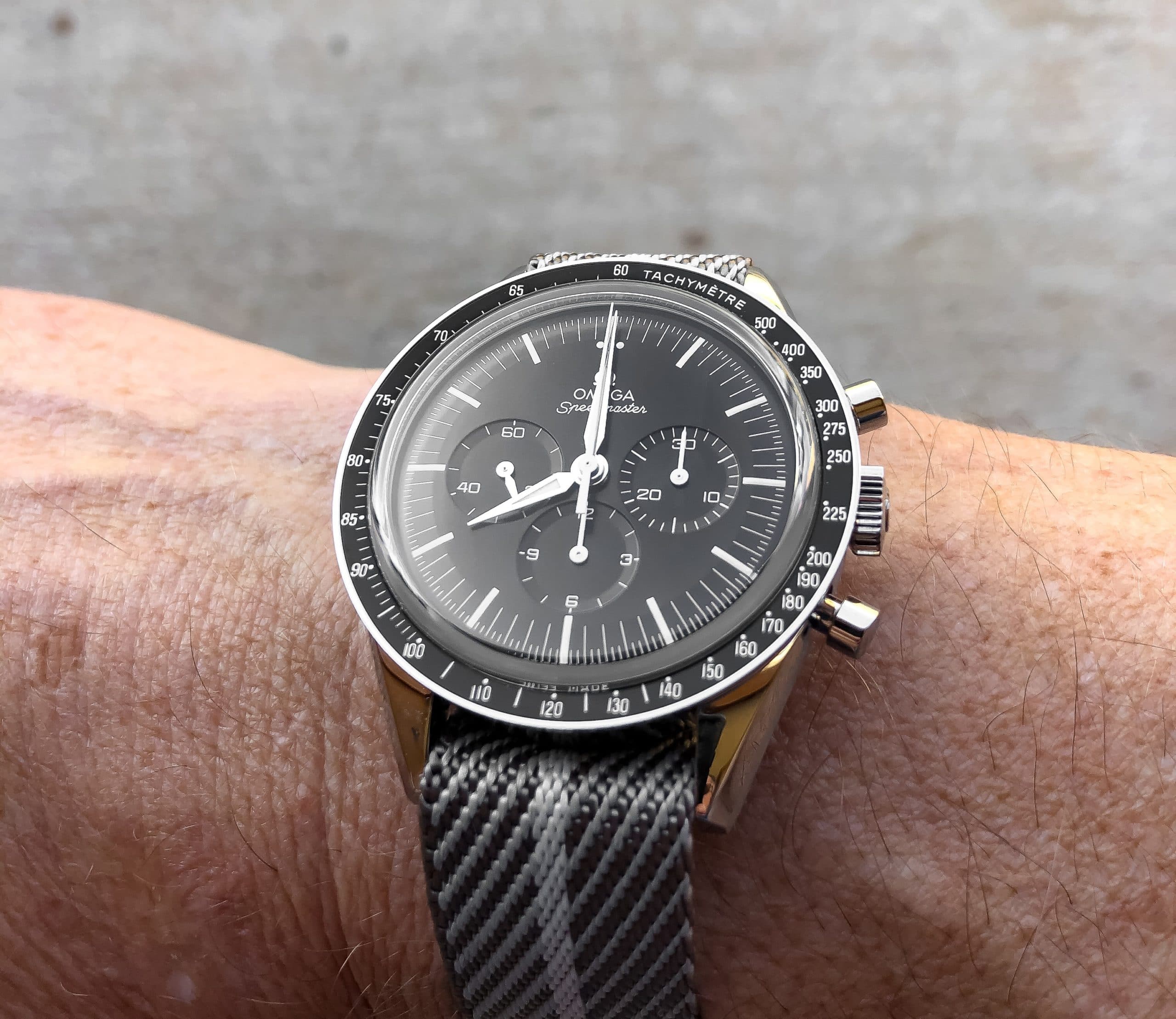
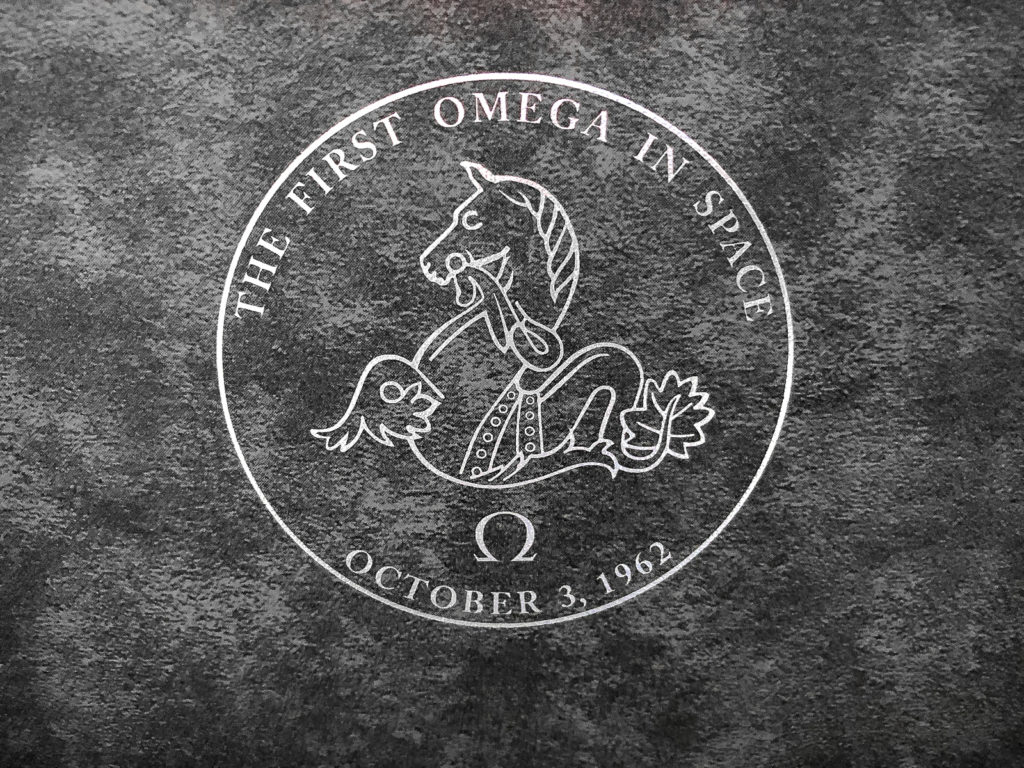
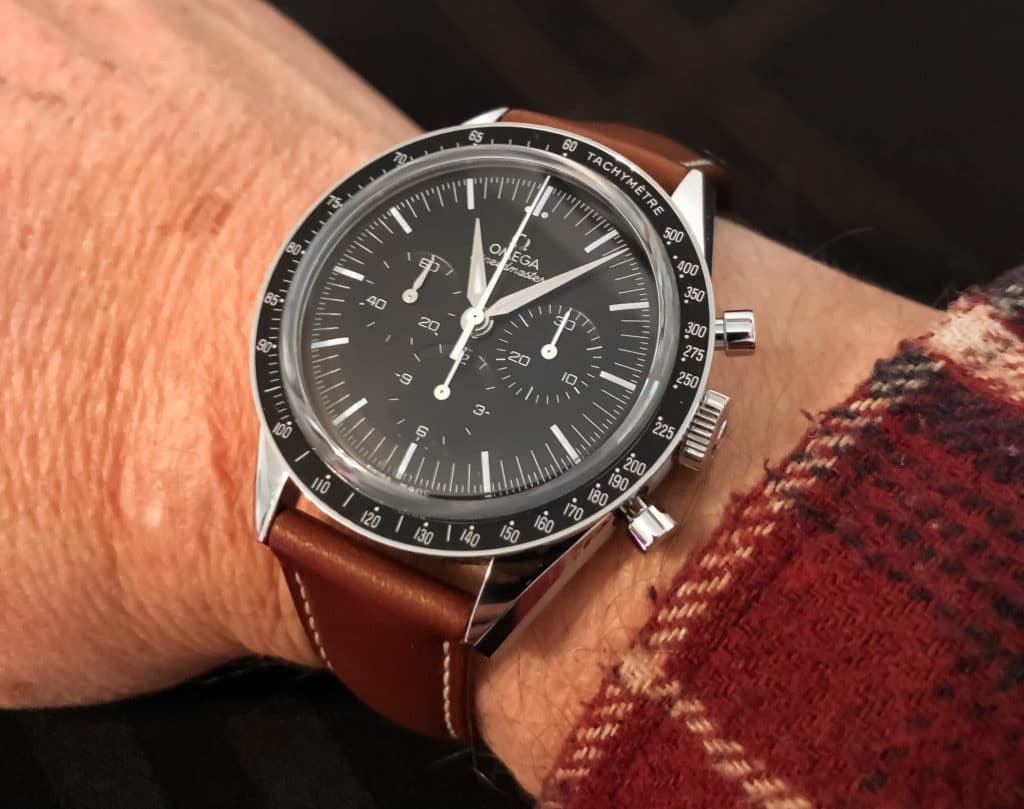
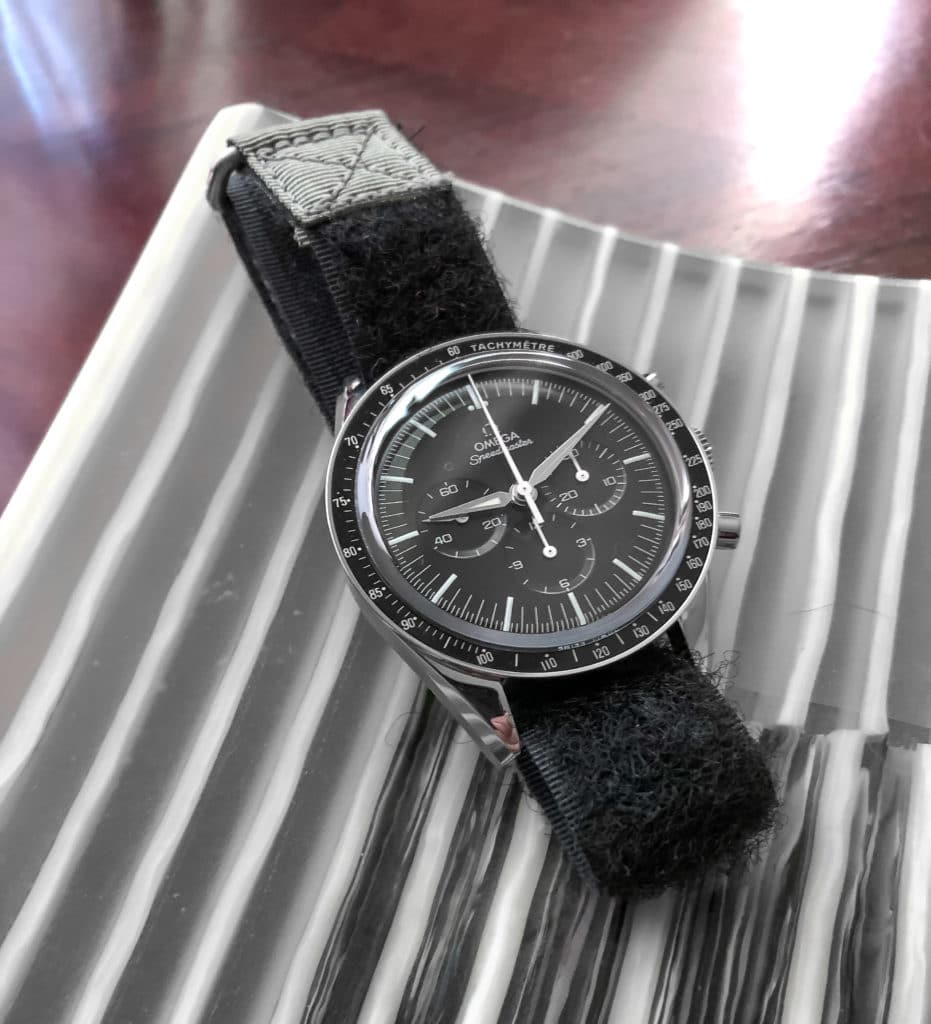
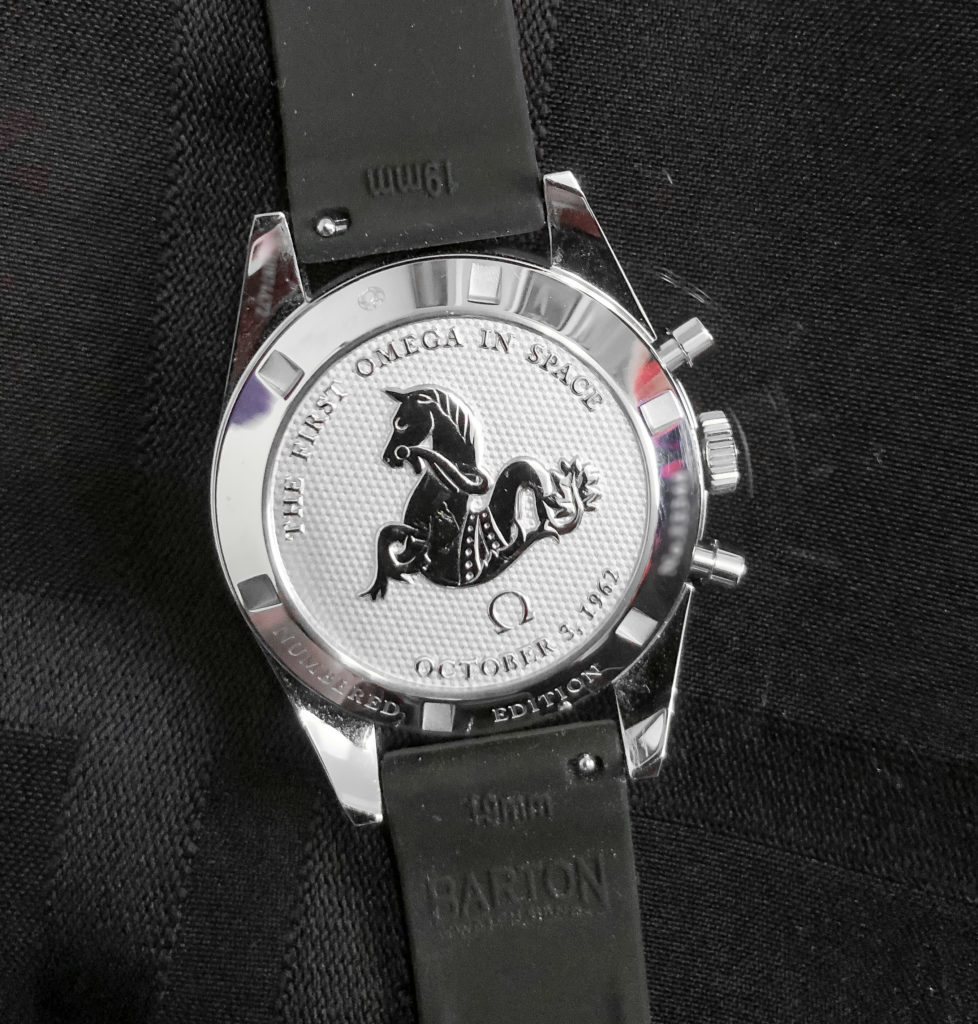
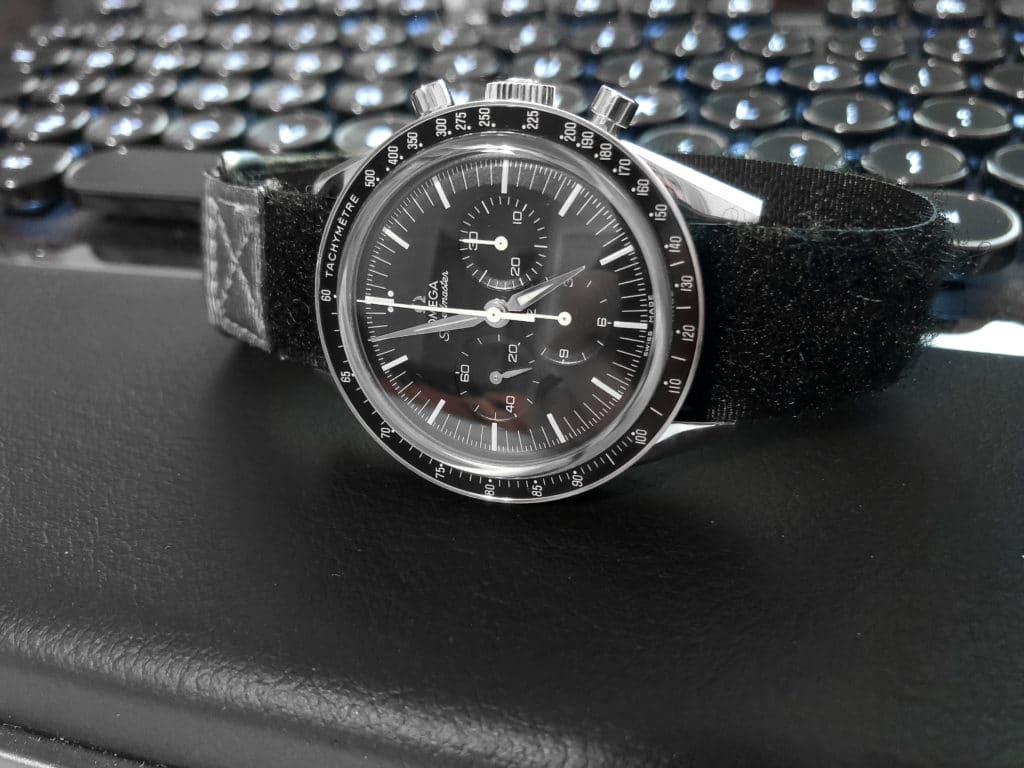
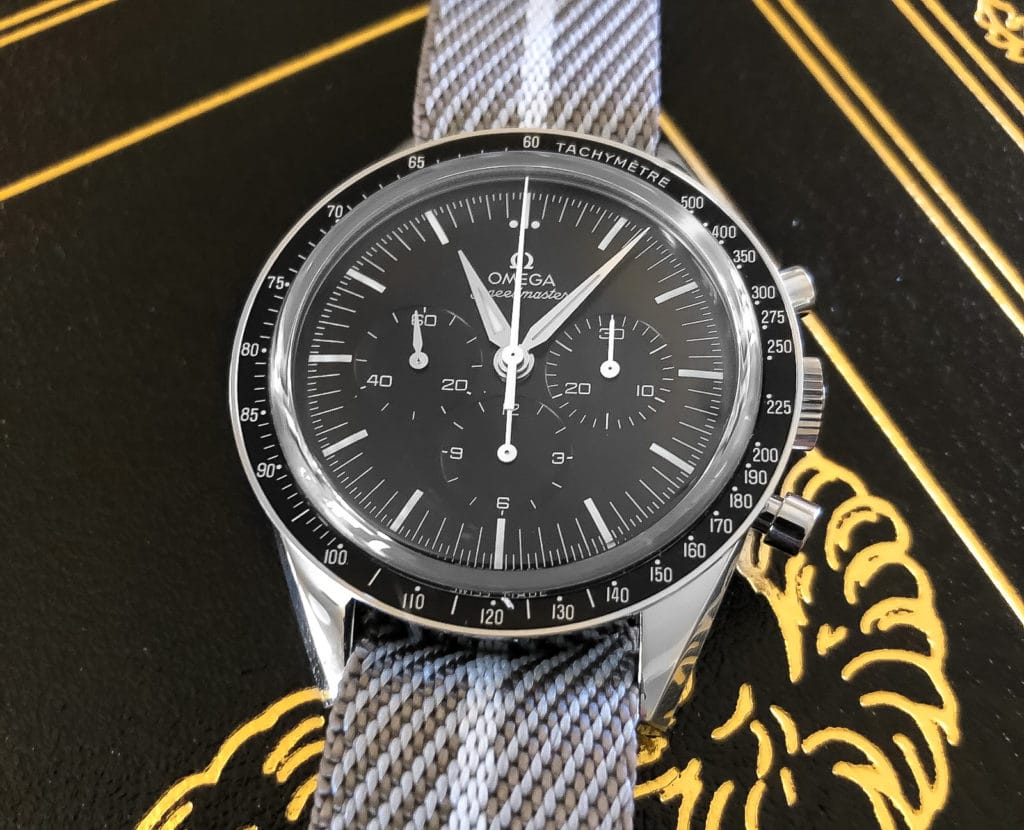
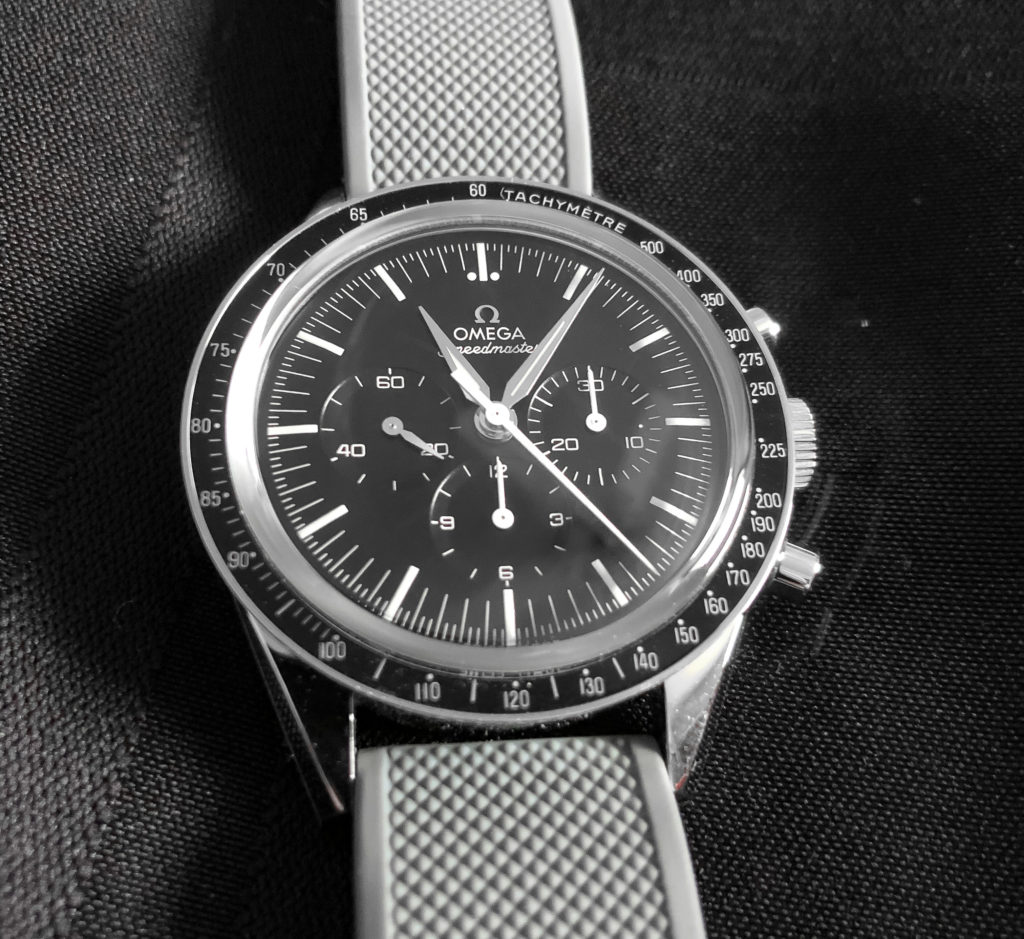
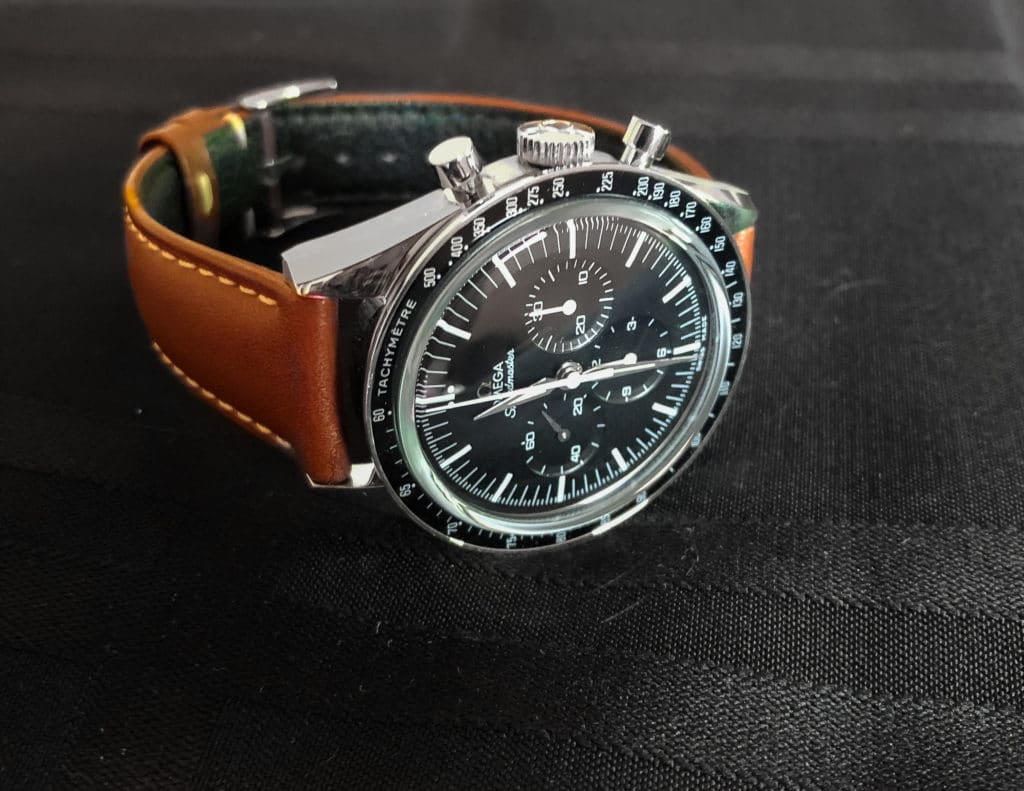
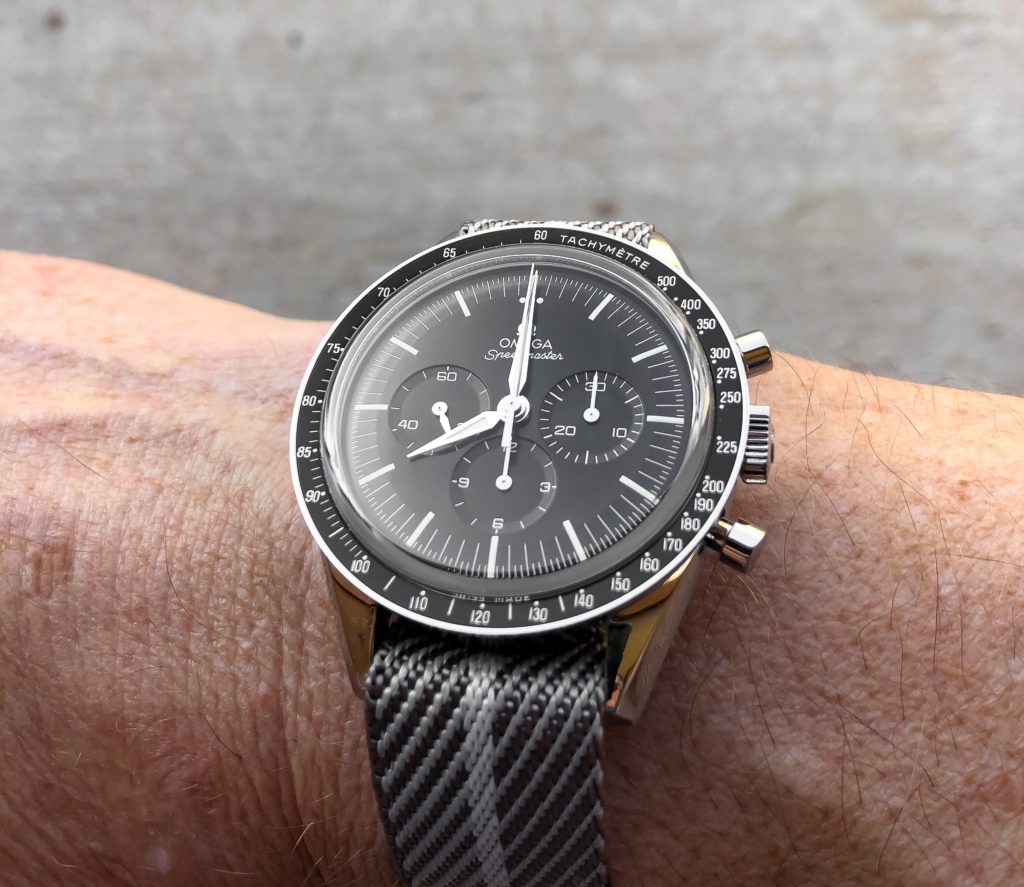
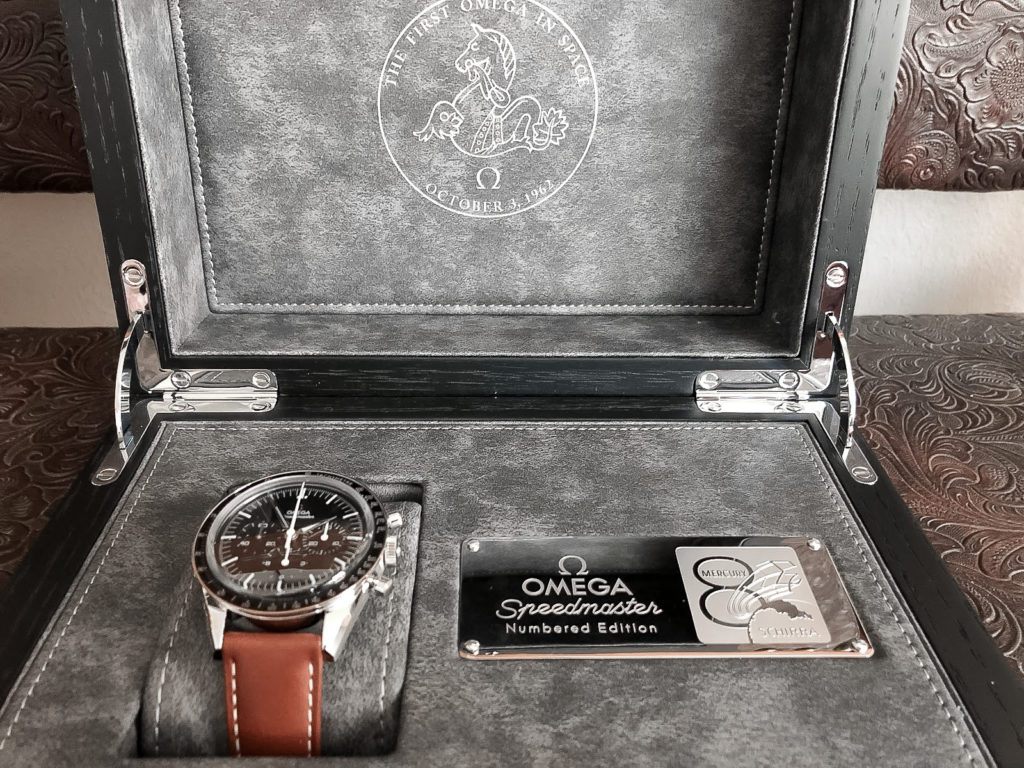
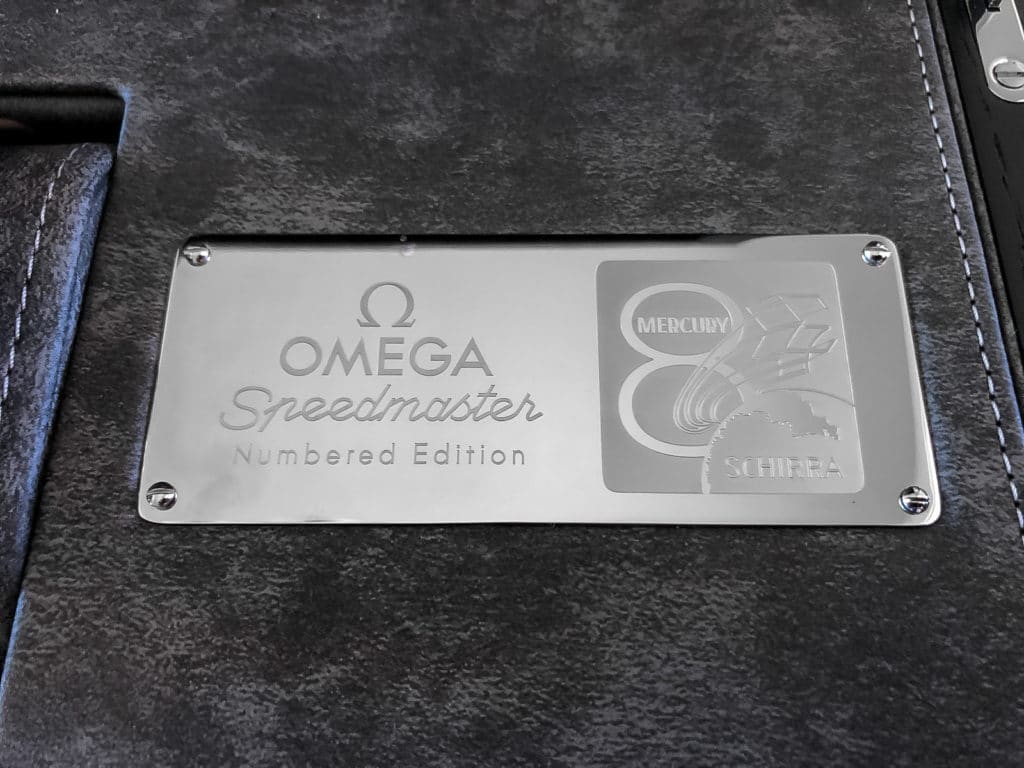
If it’s not the same movement, not the same crystal material and several other differences how is this a “moonwatch”?
It has the same movement (1861, which is the direct successor to the cal 321 originally used), and has the same hands/case as the 2998 which went into space. The rest of the stylistic differences are minimal enough that this is still a ‘moonwatch’.
Late reply as I just came across this excellent review.
As the name implies the “First Omega in Space” is a “pre-moon watch” tribute to a watch worn in space by Wally Schirra in the Mercury space program before the Apollo moon program. So technically the FOIS is not a moon watch.
Please please tell me where I can find that grey/black candy striped nato strap. Seriously. I really want to know.
The Internet
Hi Michael, do you know where on the internet? Online seller, brand name, key search terms? I’ve done some digging around but haven’t found one like it. Much appreciate any knowledge you can share. Thanks!
Never mind. Found it.
https://vario.sg/products/twill-titanium-grey-nato-watch-strap-grey-divider?variant=31496489926750
Came across this article after my recent FOIS purchase. Very well written review and great pictures as well. I am wondering what velcro strap that is in the photos. I am about to purchase a Short NASA Kizzi strap as I really like the look of that, but just curious. Thanks